Other Majestic Wildlife Migrations
16 October 2025
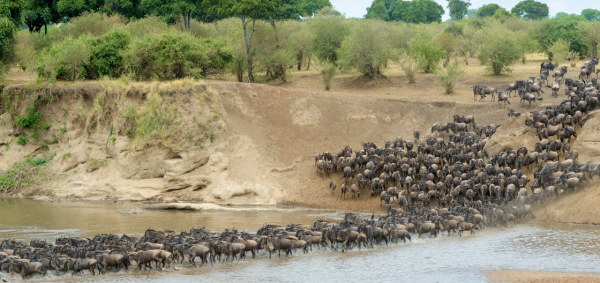 Everyone knows the Great Wildebeest Migration, where over 1.2 million wildebeest, zebras, and gazelles travel a massive circular route through the Serengeti and Masai Mara. It is, without a doubt, the planet’s largest animal migration. However, Africa and Sri Lanka host a vast tapestry of other incredible, year-round wildlife migrations that deserve just as much attention. Prepare to look beyond the famous herds and discover the hidden stories of migration across these stunning regions.
Everyone knows the Great Wildebeest Migration, where over 1.2 million wildebeest, zebras, and gazelles travel a massive circular route through the Serengeti and Masai Mara. It is, without a doubt, the planet’s largest animal migration. However, Africa and Sri Lanka host a vast tapestry of other incredible, year-round wildlife migrations that deserve just as much attention. Prepare to look beyond the famous herds and discover the hidden stories of migration across these stunning regions.
Liuwa Plain – The other big wildebeest migration
Beyond the famous herds of East Africa lies a spectacular secret: the Liuwa Plain wildebeest migration in Zambia’s Western Province. This pristine floodplain hosts Africa’s second-largest migration, an astonishing spectacle involving over 47,000 animals.
Every year, these colossal herds travel from the Mussuma region of neighbouring Angola in a dramatic seasonal response. As the first summer rains arrive (November to December), the wildebeest sweep onto the open plains to feast on the fresh grass and begin their intense calving season. This rush of life also fuels the unique predator base: unlike many parks, Liuwa is renowned for its immense, powerful hyena clans, which hold the position of the plains’ true apex predator. Witnessing the intimate drama of this ecosystem is a rare and profound adventure.
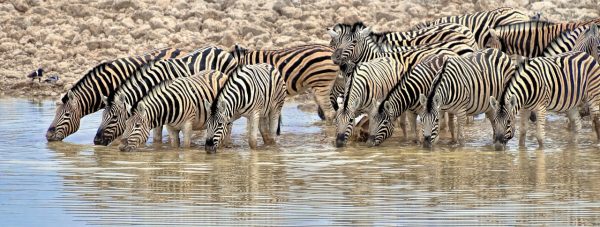 Notable zebra migrations
Notable zebra migrations
Africa is home to some truly spectacular zebra migrations, extending far beyond their well-known participation in the great wildebeest movement across the Serengeti and Maasai Mara in Kenya and Tanzania. While zebras follow similar paths as the wildebeest in search of fresh grazing, several other significant zebra movements across the continent are equally remarkable.
Namibia & Botswana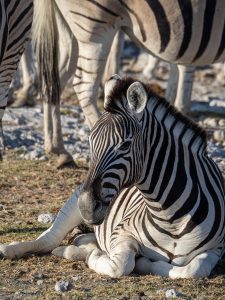
Recent research has unveiled one of the longest zebra migrations worldwide: a staggering journey of over 1,000 km between Namibia’s Zambezi Region and Botswana’s Nxai Pan and Makgadikgadi Pan. Historically hindered by fences and poaching, this vital migration route is fortunately being re-established thanks to sustained conservation efforts.
Another important, though shorter, wildlife migration involves zebras from Namibia’s Mudumu and Nkasa Rupara National Parks moving into the eastern portion of the Okavango Delta in Botswana. These transboundary movements highlight the crucial role of cooperation between Botswana and Namibia in preserving the integrity of Africa’s most extensive and captivating wildlife spectacles.
Botswana is a key location for zebra movements, hosting two major annual migrations:
- Makgadikgadi Zebra Migration: Starting around November or December, zebras journey approximately 250 km from the Okavango Delta to the Makgadikgadi Pan National Park. They typically remain there for about two and a half months before beginning their return trip in March. Interestingly, roughly 55% of the zebra population join this migration, while the remaining 45% stay in the Okavango year-round.
- People consider the Chobe-Nxai Pan Zebra Migration the longest mammal migration in Africa. Annually, these zebras travel over 1,000 km between the Chobe River floodplains and Nxai Pan National Park, a cycle that spans from June to May.
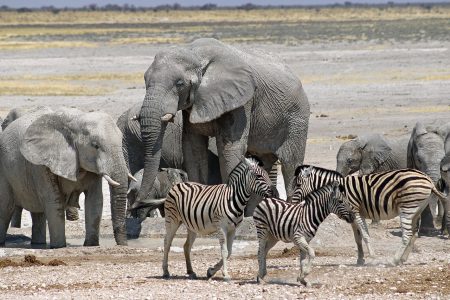 These vast journeys showcase some of the continent’s most fascinating wildlife events, well worth considering when planning a safari.
These vast journeys showcase some of the continent’s most fascinating wildlife events, well worth considering when planning a safari.
Elephant migrations
Elephants are many people’s favourite animal. Africa and Sri Lanka boast the best opportunities to see these magnificent creatures in their natural habitat.
Botswana is home to the world’s largest elephant migration, a massive movement of up to 200,000 elephants. Driven by seasonal changes, these herds constantly traverse a vast area—including Chobe, Linyanti, Savute, and the Okavango Delta—in search of vital water and food.
Linyanti – Botswana’s elephant corridor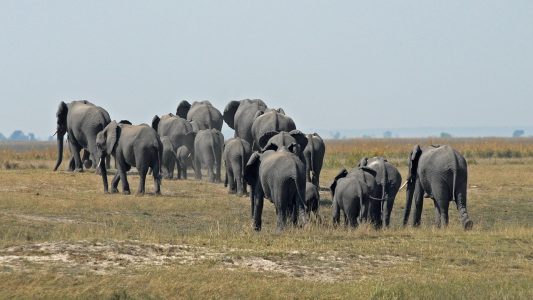
The Linyanti Wildlife Reserve in Botswana forms a crucial segment of the elephant migration corridor linking the Okavango Delta with northern rangeland near the Namibia border. During the dry season from May to October, large herds of elephants concentrate around permanent water sources in the Okavango and Linyanti regions, taking advantage of the seasonal wetlands and floodplains. As the rains begin around November to February, the elephants move northward through the corridor and into adjacent northern areas, following the spread of fresh vegetation and water availability.
An important community initiative called the “Elephant Express,” launched in 2020, helps provide safe transportation along this corridor to reduce dangerous encounters between migrating elephants and local villagers. Because the corridor’s route overlaps with several human settlements, the risk of conflict is highest from May through October, during the time of dense elephant concentration in the waterways. This program and ongoing conservation cooperation between communities and policymakers support safer coexistence during these critical months of elephant movement.
This corridor is part of a larger ecosystem connectivity effort that spans northern Botswana and neighbouring countries. The elephants’ seasonal migration covers up to 300 kilometres, moving between their dry-season refuges in riverine forests and the lush wet-season pastures farther north. Ensuring these seasonal pathways remain open and undisturbed is essential for maintaining the elephants’ health, genetic diversity, and the balance between wildlife conservation and community livelihoods driven by ecotourism and sustainable development.
The ‘Gatherings’ of elephants in Tanzania & Kenya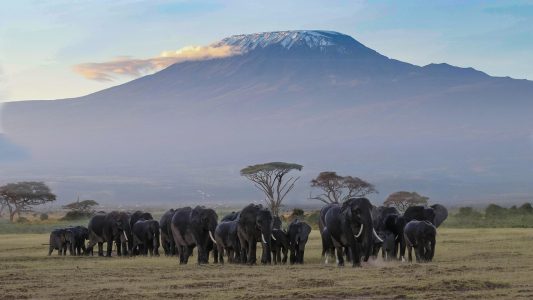
In both Kenya’s Amboseli and Tanzania’s Tarangire National Parks, elephant herds follow a crucial, seasonal rhythm. During the long dry season (June-October), massive numbers of elephants converge tightly around the parks’ permanent swamps and water sources, concentrating the spectacle for visitors. However, when the rains arrive (November-April), the herds disperse dramatically, spreading out across the adjacent community lands and the wider Masai Steppe towards the newly abundant water and fresh vegetation.
Together, these seasonal wildlife migrations allow elephants in Kenya and Tanzania to access vital resources year-round while adapting to changing environmental conditions. Although their movements are less extensive and concentrated than the iconic Great Wildebeest Migration, these elephant gatherings in Amboseli, Tarangire, and surrounding landscapes are critical to their survival in East Africa’s semi-arid ecosystems.
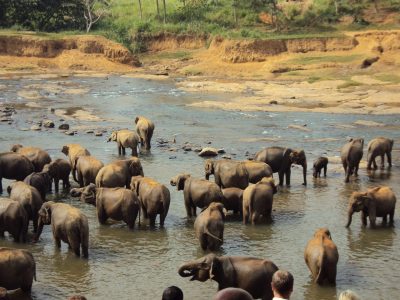 The Sri Lanka elephant ‘Gathering’
The Sri Lanka elephant ‘Gathering’
Sri Lanka is home to one of the world’s most remarkable wildlife spectacles known as ‘The Gathering,’ where hundreds of wild Asian elephants converge around the Minneriya and Kaudulla National Parks. This extraordinary event occurs during the dry season, from June to October, when the ancient Minneriya Tank—a large man-made reservoir—begins to recede, revealing lush grasses that provide rich grazing grounds. Elephants from miles around travel along Sri Lanka’s famed Elephant Corridor to come together in this sanctuary, creating a magnificent scene of socialising, playing, and feeding in and around the water.
Minneriya National Park in the North Central Province is the heart of this gathering, often hosting over 300 elephants at once, making it the largest concentration of wild Asian elephants anywhere in the world. After the rains return around November, elephants gradually migrate from Minneriya to Kaudulla National Park, where they stay until the wet season intensifies and forces them back into the forested areas. Visitors flock to these parks in the dry months to witness this impressive congregation and experience the elephants’ peaceful interactions and vital communal behaviour.
Besides Minneriya and Kaudulla, Udawalawe National Park is another notable place in Sri Lanka to see wild elephants year-round, especially during the dry season from May to September, when riverbeds and waterholes draw the elephants.
Bird migrations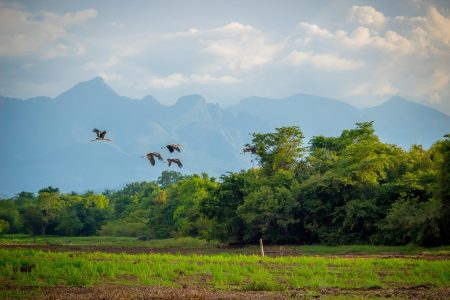
Few wildlife migrations are as significant as those undertaken by birds. Driven by ancient instincts, millions of birds take flight each year on journeys spanning thousands of kilometres. They follow well-worn flyways, moving between continents in search of ideal conditions: full bellies, safe places to raise their young, and perfect weather. Whether you’re standing by the vibrant lakes of East Africa or within the peaceful conservation forests of Sri Lanka, these migrations offer more than just a glimpse of nature’s bounty—they deepen our appreciation for the vast, interconnected global ecosystem we all share.
For the birds – Sri Lanka’s protected areas
Sri Lanka is a key location for migratory birds. In fact, they comprise just over a quarter of the island country’s total bird population. The main migratory period is from November to February, with birds using major flyways through Sri Lanka. Protected areas such as Bundala National Park and Anaiwilundawa Sanctuary are important sites for migratory birds. Conservation efforts include ringing programs to track birds.
Flamingos on the go – East African soda lakes
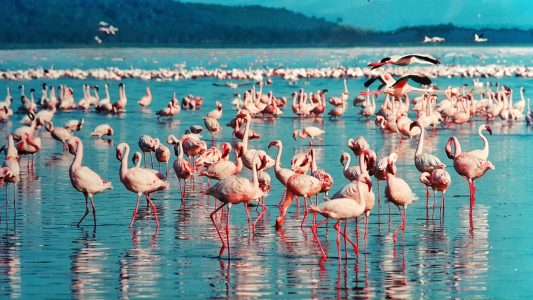 Huge populations of lesser flamingos don’t chase the sun; they chase algae. The vision of a million flamingos turning a lake shore into a shimmering sheet of pink is one of East Africa’s most breathtaking natural wonders. Yet, this spectacle is driven by a constant, crucial migration throughout the Rift Valley’s chain of soda lakes. Their survival hinges on the delicate balance of alkalinity, which dictates the availability of the blue-green algae they consume. As water levels rise and fall, making certain lakes unsuitable, the flamingos launch themselves across the landscape. This perpetual quest for the perfect feeding conditions links critical areas—from the vital nurseries of Lake Natron to the rich waters of Lake Bogoria—making their migration a mesmerising and necessary rhythm of the entire ecosystem.
Huge populations of lesser flamingos don’t chase the sun; they chase algae. The vision of a million flamingos turning a lake shore into a shimmering sheet of pink is one of East Africa’s most breathtaking natural wonders. Yet, this spectacle is driven by a constant, crucial migration throughout the Rift Valley’s chain of soda lakes. Their survival hinges on the delicate balance of alkalinity, which dictates the availability of the blue-green algae they consume. As water levels rise and fall, making certain lakes unsuitable, the flamingos launch themselves across the landscape. This perpetual quest for the perfect feeding conditions links critical areas—from the vital nurseries of Lake Natron to the rich waters of Lake Bogoria—making their migration a mesmerising and necessary rhythm of the entire ecosystem.
Let Somak take you to the action
Has the sheer drama of these ancient flyways and the relentless journeys of Africa’s flamingos and Sri Lanka’s birds ignited your wanderlust? The magic of these wildlife migrations is truly best experienced firsthand.
If you’re ready to plan an unforgettable journey to witness these natural spectacles—or simply explore the beautiful landscapes that host them—let Somak Luxury Travel be your guide. Call our reservations hotline on +442084233000. Our travel experts will share bespoke options that will place you right at the heart of the action in Africa or Sri Lanka. Sign up for our weekly Somak Luxury Travel newsletters for the latest trending travel offers and editorials by clicking on this link: Newsletter Sign Up
Contact
Somak House
Harrovian Business Village
Bessborough Road
Harrow On the Hill
HA1 3EX
Tel: +44 20 8423 3000
Fax: +44 20 8423 7700
Email: info@somak.com
Opening times
| Mon - Fri | : | 9am to 6pm |
| Sat - Sun | : | Closed |






